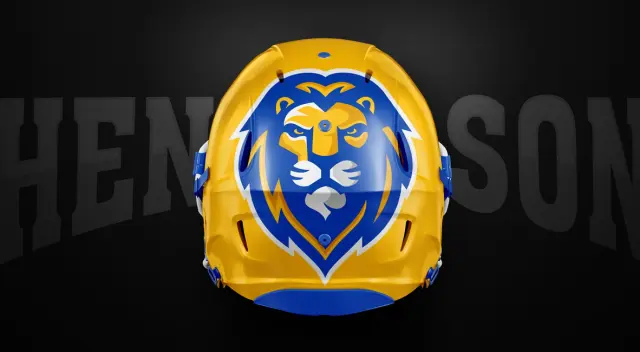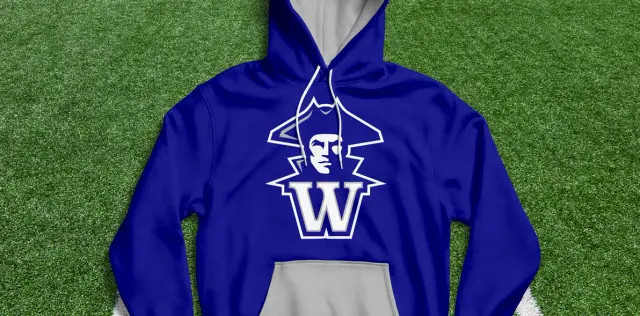School Branding Blog
Branding for Schools: Complete Guide to Boost Enrollment + 50 Examples (2025)

School Branding That Drives Enrollment Growth: The Complete Strategy Guide for Educational Leaders
Key Takeaways
- 25-40% increase in enrollment inquiries through strategic branding implementation
- Visual identity accounts for 35% of enrollment impact, digital presence 30%
- 300-500% ROI within two years when factoring in increased enrollment revenue
- 89% of parents start school research online, eliminating options based on brand impression
- Systematic approach required: research → strategy → implementation → optimization
Enrollment is the lifeblood of every school. Without sufficient student numbers, even the best educational programs struggle to survive, let alone thrive. Yet many school leaders still view branding as a “nice-to-have” rather than a strategic enrollment driver.
This perspective costs schools dearly. In today’s competitive educational landscape, where parents have more choices than ever and conduct extensive research before making decisions, your school’s brand often determines whether families even consider you—or immediately eliminate you from consideration.
The schools that understand this reality and invest strategically in enrollment-focused branding are seeing remarkable results: 25-40% increases in inquiries, 15-30% improvements in conversion rates, and sustainable enrollment growth that provides the foundation for educational excellence.
After analyzing enrollment data across 250+ school branding projects, we’ve identified the specific brand strategies that most effectively drive enrollment growth and the systematic approach that delivers consistent results. For a complete framework on building strategic brand systems, see our brand strategy 101 guide.
The Enrollment-Brand Connection: Why It Matters More Than Ever
The Modern Parent Research Journey
Phase 1: Initial Awareness (Brand-Driven)
- 89% of parents start school research online
- First impressions formed within 3-7 seconds
- Visual brand quality strongly influences initial consideration
- Professional presentation suggests educational quality
Phase 2: Active Research (Brand-Sustained)
- 2-4 weeks of intensive investigation
- Multiple touchpoints across digital and physical channels
- Brand consistency builds trust and credibility - see our data showing +25% enrollment inquiries from consistent brands
- Quality materials suggest attention to detail
Phase 3: Final Decision (Brand-Influenced)
- Emotional connection often determines final choice
- Campus visit experience heavily influenced by brand environment
- Peer recommendations filtered through brand perception
- Brand alignment with family values drives commitment
Research Reality: Schools with strong, consistent branding see 35% higher inquiry-to-enrollment conversion rates than those with weak or inconsistent brand presentation.
The Competitive Landscape Shift
Traditional Competition: Local schools in your immediate area Modern Competition:
- Charter schools with focused missions (see charter school branding services or charter application branding for pre-approval support)
- Private schools with premium positioning
- Online and hybrid learning options
- Magnet programs with specialized offerings
- Homeschooling and alternative education
Brand Differentiation Impact: In markets with 5+ school options, families eliminate 60-70% of choices based on initial brand impression alone, before ever visiting campuses or reviewing academic data.
Success Example: Henderson Collegiate used strategic branding to differentiate from 12 other charter options in their market, achieving 40% enrollment growth in their second year. Read the complete case study or explore charter school branding services.
Enrollment Growth Success Stories
The Psychology of Enrollment-Driven Branding
Parent Decision-Making Hierarchy
Level 1: Safety and Security (Foundation)
- Physical safety of campus and students
- Emotional safety and inclusive environment
- Financial security and value for investment
- Academic safety and appropriate challenge level
Brand Signals That Build Safety Perception:
- Clean, organized visual presentation
- Professional, consistent communication
- Transparent policies and procedures
- Clear emergency and safety protocols
Level 2: Academic Excellence (Core Value)
- Quality of educational programs
- Teacher qualifications and dedication
- Student achievement and outcomes
- College and career preparation
Brand Signals That Communicate Excellence:
- Sophisticated, professional design
- Achievement-focused messaging
- Success stories and testimonials
- Recognition and accreditation displays
Level 3: Community and Belonging (Emotional Connection)
- School culture and values alignment
- Student happiness and engagement
- Parent involvement opportunities
- Long-term community connection
Brand Signals That Create Connection:
- Warm, welcoming visual identity
- Student-centered messaging
- Community event documentation
- Alumni success and engagement
Success Example: Woodbridge School District addressed all three levels through comprehensive branding, achieving district-wide enrollment stability despite demographic challenges.
The Trust-Building Brand Framework
Competence Trust (Can you deliver?)
- Professional presentation quality
- Consistent brand application
- Clear communication standards
- Organized systems and processes
Character Trust (Do you care?)
- Student-centered messaging
- Community involvement evidence
- Transparent communication
- Values-based positioning
Connection Trust (Are you like us?)
- Cultural alignment signals
- Demographic representation
- Community integration
- Shared values expression
Brand Implementation: Bridgewater-Raritan High School built all three trust types through strategic rebranding, resulting in 25% increase in enrollment inquiries.
Strategic Brand Elements That Drive Enrollment
1. Visual Identity System (35% of Enrollment Impact)
Professional visual identity design is the foundation of enrollment success. Our visual identity design agency creates complete brand systems that work across all touchpoints—from logos and color palettes to comprehensive brand guidelines.
Logo and Symbol System
- Professional Quality: Suggests educational excellence
- Memorable Design: Aids recall and recognition
- Appropriate Complexity: Works across all applications
- Cultural Sensitivity: Inclusive and respectful representation
Color Psychology for Enrollment
- Blue: Trust, stability, academic excellence (most effective for enrollment)
- Green: Growth, harmony, environmental consciousness
- Red: Energy, passion, achievement (use carefully - can suggest aggression)
- Purple: Creativity, innovation, premium positioning
- Gold/Yellow: Optimism, achievement, premium quality
Typography Strategy
- Headlines: Bold, confident fonts that command attention
- Body Text: Readable, professional fonts that suggest competence
- Accent Text: Distinctive fonts that add personality
- Consistency: Same font families across all materials
Visual Success Example: Harmony Community School used calming blues and greens to communicate safety and growth, directly addressing parent concerns and increasing enrollment inquiries by 30%.
2. Messaging and Positioning (30% of Enrollment Impact)
Strategic brand messaging that converts prospects requires expertise in parent psychology and enrollment marketing. Our school branding strategy service helps you develop messaging frameworks that drive enrollment decisions.
Value Proposition Development
- Unique Educational Approach: What makes your teaching different
- Student Outcomes: Specific results and achievements
- Community Benefits: How families benefit from joining
- Competitive Advantages: Why choose you over alternatives
Message Hierarchy Framework
- Primary Message: Core value proposition (15-20 words)
- Supporting Messages: Key benefits and differentiators (3-5 points)
- Proof Points: Specific evidence and examples
- Call to Action: Clear next steps for interested families
Emotional Messaging Strategy
- Aspiration: What students can become
- Belonging: How families fit into community
- Achievement: Success stories and outcomes
- Security: Safety and support systems
Messaging Success Example: Republic School District developed messaging that connected rural values with modern education, resonating with their community and stabilizing enrollment during demographic decline.
3. Digital Presence Optimization (25% of Enrollment Impact)
Website Conversion Architecture
- Homepage: Clear value proposition and easy navigation
- About Page: Mission, values, and educational philosophy
- Academics: Program details and achievement data
- Admissions: Simple, clear enrollment process
- Contact: Multiple ways to connect and visit
Search Engine Optimization
- Local SEO: Dominate local school searches
- Content Marketing: Educational blog posts and resources
- Review Management: Positive online reputation
- Social Media: Active, engaging community presence
Digital Touchpoint Optimization
- Email Marketing: Nurture sequences for prospective families
- Virtual Tours: Compelling campus and classroom experiences
- Online Events: Webinars and information sessions
- Mobile Experience: Optimized for smartphone research
Digital Success Example: Woodbridge School District optimized their digital presence across all district schools, resulting in 20% increase in online inquiries and improved conversion rates.
4. Campus Environment and Experience (10% of Enrollment Impact)
Physical Brand Implementation
- Exterior Signage: Professional first impression
- Interior Graphics: Consistent brand throughout campus
- Classroom Environment: Branded educational materials
- Common Areas: Welcoming, branded spaces
Visitor Experience Design
- Arrival Experience: Clear wayfinding and welcome
- Tour Route: Strategic showcasing of best features
- Information Materials: Professional, branded collateral
- Follow-up Process: Systematic nurturing of prospects
Environmental Success Example: Willsboro Central School transformed their campus environment with strategic branding, creating a welcoming atmosphere that increased tour-to-enrollment conversion by 40%.
Enrollment-Focused Brand Implementation Strategy
Phase 1: Enrollment Audit and Research (Month 1)
Current State Analysis
- Enrollment Trends: 5-year data analysis and projections
- Competitive Landscape: Local school options and positioning
- Parent Research: Survey current families about decision factors
- Brand Assessment: Current brand strength and consistency
Market Research Activities
- Demographic Analysis: Target family characteristics and preferences
- Competitor Brand Review: Strengths, weaknesses, and opportunities
- Parent Interview Process: Deep dive into decision-making factors
- Community Perception Study: Broader stakeholder brand awareness
Research Success Example: Henderson Collegiate discovered through research that parents valued “soaring achievement” messaging, leading to eagle mascot and 40% enrollment growth.
Phase 2: Strategic Brand Development (Month 2-3)
Brand Strategy Framework
- Target Audience Definition: Specific parent and student personas
- Value Proposition Development: Unique educational benefits
- Competitive Positioning: Differentiation from other schools
- Brand Personality: Character traits that attract target families
Visual Identity Creation
- Logo System: Professional, memorable, and versatile
- Color Palette: Psychology-based selection for enrollment appeal
- Typography: Readable, professional, and distinctive
- Photography Style: Authentic, diverse, and aspirational
Messaging Development
- Core Messages: Primary value propositions
- Audience-Specific Messaging: Tailored for different family types
- Proof Points: Evidence and success stories
- Communication Guidelines: Consistent voice and tone
Phase 3: Digital Presence Optimization (Month 3-4)
Website Redesign and Optimization
- User Experience: Intuitive navigation and clear calls-to-action
- Content Strategy: SEO-optimized, parent-focused content
- Conversion Optimization: Forms, contact methods, and follow-up
- Mobile Optimization: Smartphone-friendly research experience
Search and Social Media
- Local SEO: Google My Business and local directory optimization
- Content Marketing: Blog posts and educational resources
- Social Media Strategy: Engaging, community-focused content
- Online Reputation: Review management and response strategy
Digital Marketing Integration
- Email Marketing: Automated nurture sequences
- Paid Advertising: Targeted campaigns for enrollment periods
- Analytics Setup: Tracking and measurement systems
- Lead Management: CRM integration and follow-up processes
Phase 4: Physical Implementation (Month 4-5)
Campus Brand Integration
- Exterior Signage: Professional, welcoming entrance experience
- Interior Graphics: Consistent branding throughout facilities
- Classroom Materials: Branded educational resources
- Common Area Enhancement: Welcoming, community-focused spaces
Marketing Material Development
- Print Collateral: Brochures, flyers, and information packets
- Digital Materials: Presentations, email templates, and social graphics
- Promotional Items: Branded merchandise and giveaways
- Event Materials: Open house, tour, and information session support
Staff Training and Implementation
- Brand Guidelines: Comprehensive usage standards
- Communication Training: Consistent messaging across all staff
- Customer Service: Enrollment-focused interaction protocols
- Feedback Systems: Continuous improvement processes
Phase 5: Launch and Optimization (Month 5-6)
Strategic Launch Campaign
- Community Announcement: Press releases and media coverage
- Open House Events: Showcase new brand and facilities
- Digital Campaign: Website launch and social media promotion
- Stakeholder Communication: Students, parents, and community updates
Performance Monitoring
- Enrollment Metrics: Inquiry volume, conversion rates, and enrollment numbers
- Brand Awareness: Community recognition and perception surveys
- Digital Performance: Website traffic, engagement, and lead generation
- Feedback Collection: Parent, student, and staff input
Continuous Optimization
- Data Analysis: Regular review of enrollment and brand metrics
- Strategy Refinement: Adjustments based on performance data
- Content Updates: Fresh materials and messaging updates
- Seasonal Campaigns: Enrollment period optimization
Measuring Enrollment-Driven Brand Success
Primary Enrollment Metrics
Lead Generation
- Inquiry Volume: Total number of prospective family contacts
- Inquiry Quality: Qualified prospects vs. general information requests
- Source Attribution: Which brand touchpoints generate most leads
- Seasonal Patterns: Enrollment period performance trends
Conversion Metrics
- Inquiry-to-Tour Rate: Percentage of inquiries that schedule visits
- Tour-to-Application Rate: Percentage of tours that result in applications
- Application-to-Enrollment Rate: Percentage of applications that enroll
- Overall Conversion Rate: End-to-end prospect-to-student conversion
Retention and Growth
- Student Retention Rate: Percentage of students who return each year
- Sibling Enrollment: Additional family members who enroll
- Referral Rate: New families from current family recommendations
- Waitlist Development: Demand exceeding capacity indicators
Success Metrics Example: Woodbridge School District tracked all metrics, showing 15% improvement in inquiry-to-enrollment conversion after brand implementation.
Brand Awareness and Perception Metrics
Community Awareness
- Unaided Brand Recall: Community members who mention school unprompted
- Aided Brand Recognition: Recognition when school name is mentioned
- Brand Association: Attributes and qualities associated with school
- Competitive Positioning: Ranking vs. other local school options
Digital Brand Performance
- Website Traffic: Organic search and direct traffic growth
- Social Media Engagement: Followers, likes, shares, and comments
- Online Reviews: Rating improvements and review volume
- Search Rankings: Position for key local education searches
Stakeholder Satisfaction
- Parent Satisfaction: Current family happiness and loyalty
- Student Pride: Student engagement with school brand and identity
- Staff Morale: Employee satisfaction with school brand and culture
- Alumni Connection: Graduate engagement and support
Financial Impact Metrics
Revenue Growth
- Enrollment Revenue: Direct tuition and fee income increases
- Fundraising Success: Donation and grant income improvements
- Merchandise Sales: Branded item sales and spirit wear revenue
- Event Attendance: Paid event participation and sponsorship
Cost Efficiency
- Marketing ROI: Revenue generated per marketing dollar spent
- Acquisition Cost: Cost to acquire each new enrolled student
- Retention Value: Lifetime value of retained vs. new students
- Operational Efficiency: Reduced marketing costs due to improved conversion
Long-term Value
- Brand Equity: Estimated value of brand recognition and reputation
- Market Position: Competitive strength and differentiation value
- Community Investment: Stakeholder commitment and support levels
- Future Growth Potential: Capacity for sustainable enrollment growth
Common Enrollment Branding Mistakes and Solutions
Mistake 1: Generic Educational Messaging
Problem: Using clichéd phrases like “excellence in education” that every school claims Impact: Fails to differentiate from competitors, reduces memorability Solution: Develop specific, evidence-based value propositions unique to your school
Example Fix: Instead of “Preparing students for success,” use “Our project-based learning approach has sent 95% of graduates to their first-choice colleges for five consecutive years.”
Mistake 2: Inconsistent Brand Application
Problem: Different quality and style across various touchpoints Impact: Creates doubt about school management and attention to detail Solution: Develop comprehensive brand guidelines and ensure consistent implementation
Success Example: Bridgewater-Raritan High School achieved 25% inquiry increase through consistent brand application across all touchpoints.
Mistake 3: Ignoring Digital-First Parent Behavior
Problem: Focusing on print materials while parents research primarily online Impact: Missing opportunities to influence during critical research phase Solution: Prioritize digital presence optimization and online reputation management
Mistake 4: Underestimating Visual Impact
Problem: Assuming parents only care about academics and programs Impact: Losing families before they learn about educational quality Solution: Invest in professional visual identity that reflects educational excellence
Mistake 5: Weak Call-to-Action Strategy
Problem: Unclear or missing next steps for interested families Impact: Losing qualified prospects due to confusion or friction Solution: Clear, compelling calls-to-action at every brand touchpoint
School-Level Enrollment Strategies
Elementary School Enrollment Branding
Parent Priorities: Safety, nurturing environment, foundational skills Brand Focus: Warmth, care, developmental appropriateness Key Messages: “Where learning begins with love and grows with confidence” Visual Style: Friendly, colorful, approachable design
Success Example: Harmony Community School used elementary-focused branding to build trust with young families, achieving consistent enrollment growth.
Middle School Enrollment Branding
Parent Priorities: Academic preparation, social development, character building Brand Focus: Growth, support, preparation for high school Key Messages: “Bridging childhood and adolescence with confidence” Visual Style: Dynamic, supportive, growth-oriented design
Success Example: Dexter Middle School created branding that addressed middle school transition concerns, improving enrollment stability.
High School Enrollment Branding
Parent Priorities: College preparation, career readiness, independence development Brand Focus: Achievement, opportunity, future preparation Key Messages: “Launching students toward their brightest future” Visual Style: Sophisticated, achievement-focused, aspirational design
Success Example: Bridgewater-Raritan High School positioned itself as the premier college prep option, increasing enrollment inquiries by 25%.
Charter School Enrollment Branding
Parent Priorities: Educational innovation, specialized programs, choice alternatives Brand Focus: Mission-driven education, unique approach, results Key Messages: “Education designed for your child’s unique potential” Visual Style: Innovative, mission-focused, results-oriented design
Success Example: Henderson Collegiate used charter-specific branding to communicate their unique mission, achieving 40% enrollment growth.
Christian School Enrollment Branding
Parent Priorities: Faith integration, academic excellence, character development, community values Brand Strategy: Balance spiritual formation with academic achievement, appeal to shared values Visual Style: Authentic, professional, values-driven design that reflects faith tradition
Success Example: Valley Christian School created branding that authentically represented their faith-based mission while communicating academic excellence, resulting in 25% increase in qualified inquiries.
Specialized Resources: For comprehensive Christian school branding strategies, see our Complete Christian School Branding Guide and Christian School Marketing Strategies.
Ready to Assess Your Current Enrollment Performance?
Before implementing new branding strategies, it’s crucial to understand where you currently stand. Our ENROLL OS Quick Assessment provides a comprehensive analysis of your enrollment performance across 6 critical domains.
Get Your Enrollment Score in 60 Seconds:
- 12 strategic questions covering all enrollment factors
- 6 measurable domains with detailed breakdown
- National ranking and peer comparison
- Specific recommendations for improvement
- Free detailed PDF report
Calculate Your ENROLL OS Score →
No credit card required • Results in 60 seconds • Used by 500+ charter schools
This assessment will help you identify which branding strategies will have the biggest impact on your specific enrollment challenges.
Ready to Transform Your School’s Enrollment Through Strategic Branding?
Enrollment-driven branding isn’t about making your school look pretty—it’s about creating a strategic system that influences parent choice, builds community trust, and drives sustainable growth.
Our school branding strategy service specializes in creating enrollment-focused brand systems that deliver measurable results. We help schools understand their enrollment challenges, develop compelling brand strategies, and implement systems that consistently convert prospects into enrolled students.
See enrollment-driven branding success:
- Henderson Collegiate - 40% enrollment growth through strategic charter branding
- Woodbridge School District - District-wide enrollment stability through consistent branding
- Bridgewater-Raritan High School - 25% inquiry increase through high school positioning
- Harmony Community School - Elementary enrollment growth through trust-building branding
- Republic School District - Rural enrollment stability through community-centered branding
Whether you’re facing enrollment challenges, competing with new schools, or simply want to grow your student body, we can help you create a brand strategy that drives real enrollment results.
Frequently Asked Questions About Enrollment-Driven Branding
How quickly can school branding impact enrollment numbers?
Most schools see initial results within 3-6 months of implementing strategic branding, with full enrollment benefits realized within 12-18 months. Digital improvements can show impact within weeks, while comprehensive brand implementation typically takes a full enrollment cycle to demonstrate maximum effectiveness.
What’s the typical ROI of investing in enrollment-focused branding?
Schools typically see 300-500% ROI within two years when factoring in increased enrollment revenue. The average school experiences 25-40% increases in enrollment inquiries and 15-30% improvements in conversion rates after strategic brand implementation.
Which brand elements have the biggest impact on enrollment?
Visual identity accounts for 35% of enrollment impact, digital presence quality for 30%, messaging clarity for 20%, and campus environment for 15%. However, consistency across all touchpoints is crucial—inconsistent branding can undermine even the strongest individual elements.
How do you measure the success of enrollment branding initiatives?
Key metrics include inquiry volume growth, inquiry-to-tour conversion rates, tour-to-enrollment rates, online engagement metrics, brand awareness surveys, and overall enrollment growth. Most successful schools track these monthly during enrollment periods and annually for long-term trends.
Can smaller schools compete with larger schools through strategic branding?
Absolutely. Strategic branding often gives smaller schools significant advantages by highlighting personalized attention, community connection, and specialized programs that larger schools cannot offer. Many small schools outperform larger competitors through focused brand positioning that emphasizes their unique strengths.
What’s the difference between marketing and enrollment-driven branding?
Marketing focuses on promoting existing programs and events, while enrollment-driven branding creates a comprehensive system that influences parent choice at every touchpoint. Branding addresses the underlying perceptions and emotions that drive enrollment decisions, while marketing communicates specific information about your school.
Free Assessment Tools:
Before starting a branding project, assess your school’s brand health with our free quiz, review our 15-point brand audit checklist, explore our branding quick start guide for a step-by-step roadmap, or check our glossary for definitions of terms like brand architecture and touchpoints.
Related reading: School Branding 101 · Athletic Program Branding
Ready to grow your enrollment through strategic branding? Get a free enrollment brand analysis and discover how the right brand strategy can transform your school’s growth trajectory.
Complete Your School Branding Education
This guide is part of our Enrollment & Marketing content cluster. Build your enrollment strategy with these comprehensive guides:
Core Enrollment Strategy Guides
- How School Branding Influences Parent Choice - Deep dive into parent psychology and decision-making factors
- School Enrollment Marketing Design Strategy - Proven marketing design strategies that drive student recruitment
- School Website Optimization for Enrollment - Turn website traffic into inquiries and tours
- School Email Marketing for Enrollment - Nurture prospective families effectively
- School Social Media Strategy - Build community and drive enrollment through social media
Strategic Implementation
- School Brand Messaging Framework - Convert prospects with strategic messaging
- School Brand Positioning Guide - Stand out in competitive markets
- School Brand Audit Checklist - Evaluate your current brand health
Real Results & Case Studies
- Building a Championship School Brand: Real Charter School Results - See how one charter school achieved 40% enrollment growth through strategic branding
- Charter School Launch Branding: Complete Checklist - Comprehensive guide for new charter school launches
Related Pillar Guides
- Complete Guide to School Mascot Design - Build school pride that attracts families
- Digital-First School Branding Strategy - Optimize your online presence for enrollment
Tools & Resources
- School Branding ROI Calculator - Measure the impact of your branding investment
- Brand Assessment Quiz - Get a personalized report with next-step priorities
- School Branding Services - Explore our enrollment-focused branding services
We Build and Manufacture Mascot Costumes
A professionally built mascot costume creates unforgettable moments at games, rallies, and community events.

See Full Details →
Design to Delivery
We manage everything
6-12 Week Delivery
In time for your season
Safety First
Ventilation & visibility
Starts at $2,500
Professional quality
About Mash Bonigala
Mash Bonigala is the Founder & CEO of School Branding Agency. Over the past 15 years, he's helped 250+ K-12 schools transform their brand identity and drive enrollment growth. From charter schools to public districts, Mash specializes in creating mascot systems and brand strategies that rally communities, boost school spirit, and convert prospects into enrolled families. Schedule a Zoom call to discuss your school →




